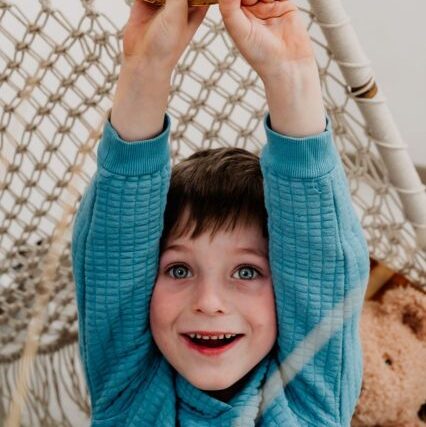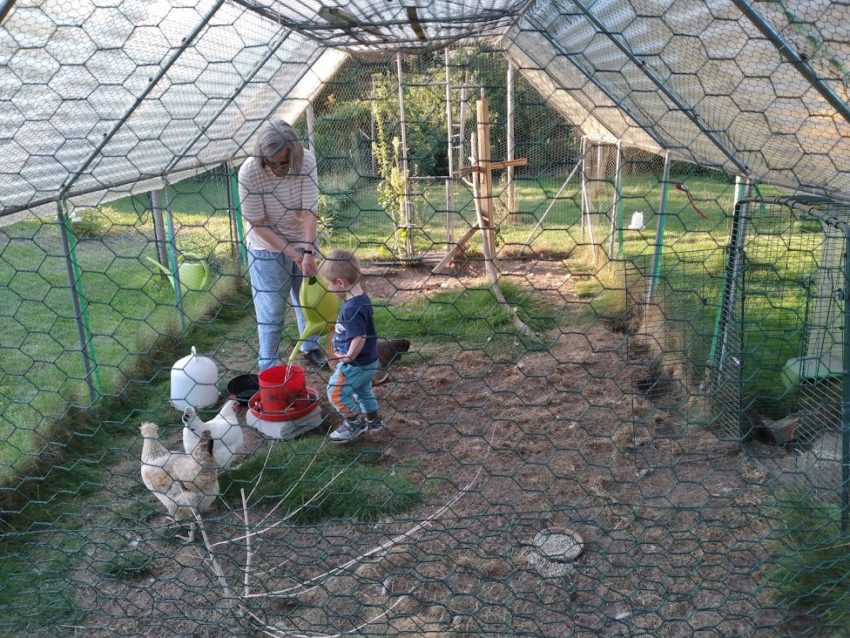Montessori education stresses the importance of letting young children interact with animals. Several Montessori schools have their own little farms, where the children can feed, clean, and touch chickens, horses, or other kinds of domestic animals. This takes away their fear of big or loud or fast animals, gets them used to new smells and textures, and especially city children who are not accustomed to free-range animals can get a boost mentally and physically.
Caring for plants and animals is part of the so-called “practical life lessons” from the “cosmic plan.” Young children learn to take care of self and others, bear responsibility for the welfare of others, and generally value life. Amare Montessori, where Lyons Cub went, had a big garden with beds for the children to grow their own plants and observe their progress.
Animals Animals are best observed free in nature rather than in cages. Hang a bird feeder just outside the window and show the child how to sit quietly so that the birds won't be afraid. Binoculars give the child a feeling of participating in the birds' activities, and allow the child to watch birds from a distance. Having temporary tadpole guests, and watching cocoons hatch is a truly magical experience for the child. It provides the experience of seeing a creature close up without having to keep it permanently out of its natural setting. Because wild animals are less accessible to the children than plants, we suggest first observing birds, insects, and other animals in nature, to arouse an interest and, after this experience, providing more animal models, pictures, and books about them—picture books, beginning reading books, and reference books. Playing with animal models and blocks has always been a favorite open-ended-toy choice of children. Please be sure that your child's animal models are made of safe plastic instead of toxic plastic materials. We find that the ones made by European companies are safe for children at this age. We focus on the child's natural love for and affinity with nature, and the tendency to want to touch, hold, and care for nature specimens such as rocks, shells, seeds, flowers and leaves, insects, kittens—all things living and nonliving. Books can help the child explore animals outside their immediate surrounding and learn even more names. (Reprinted from the 2009-2010 edition of The Joyful Child, Montessori from Birth to Three, "Montessori Philosophy & Practice AGE 1-3 YEARS—Plants & Animals." Shared with permission of The Joyful Child Montessori Company: www.thejoyfulchild.us)









Luckily, Lyons Cub’s aunty in Europe has chickens, so every time we visit her, he is allowed to go into the chicken coop, search for eggs in the straw, admire the big, yellow and red balloons that were hung up to scare away the hawks, pick red currants to feed the chickens with, throw seeds and bread crumbs into their coop, and watch grandma water them and get the poop out with a shovel (it is used as dung on the flower beds afterwards). There’s big excitement when the chicken coop’s door gets opened and the chickens are allowed to roam free in the yard! Their huge enclosure has a net all around and on top, so that the birds of prey cannot get to them. Lyons Cub was surprised to see the difference in size of the eggs–depending on which chicken laid them, they were greenish, white, or brown, and the eggs of the new and young chickens were small, while the ones of the older hens were huge! Finding and feeling a feather was also a great experience for him.


We have a friend who has chickens and my kids enjoy going out to help him get the eggs. Fresh eggs are so much better!
Your blog is amazing, I will be browsing more later! Are you in Belgium too?
My daughter is also fascinated with chicken she is asking but we are still thinking if we can manage to take care of them.
This is such a beautiful adventure! I also see the value in giving our children these real life experiences with animals.